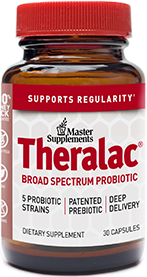 | December 8, 2009 | Mayo Clinic finds higher vitamin D levels associated with improved lymphoma survival | | A presentation at the annual meeting of the American Society of Hematology held December 5-8 this year in New Orleans reveals the finding of researchers from the Mayo Clinic and the University of Iowa of an association between higher levels of vitamin D and greater survival in individuals being treated for lymphoma. In a study funded by the National Cancer Institute, researchers participating in the University of Iowa/Mayo Clinic Lymphoma Specialized Program of Research Excellence (SPORE) measured serum 25-hydroxyvitamin D levels in 374 patients with newly diagnosed diffuse large B-cell lymphoma. The team chose to study lymphoma due to the higher incidence of the disease in northern latitudes, a finding that may be related to decreased exposure to sunlight which results in lower levels of vitamin D. The study is the first to evaluate lymphoma outcome in relation to vitamin D levels. Half of the patients were found to have deficient serum 25-hydroxyvitamin D levels of less than 25 nanograms per milliliter. This group had a 1.5 times greater adjusted risk of disease progression and twice the rate of dying over the course of the study compared to those with optimal levels. Vitamin D has been found to regulate numerous genes involved in prostate, breast, colon and other cancers. A deficiency of the vitamin may be involved in the genesis of some cancers as well as influencing the outcome of the disease. "The exact roles that vitamin D might play in the initiation or progression of cancer is unknown, but we do know that the vitamin plays a role in regulation of cell growth and death, among other processes important in limiting cancer," explained lead investigator, Matthew Drake, MD, PhD, who is an endocrinologist at the Mayo Clinic in Rochester, Minnesota. "It is fairly easy to maintain vitamin D levels through inexpensive daily supplements or 15 minutes in the sun three times a week in the summer, so that levels can be stored inside body fat." "These are some of the strongest findings yet between vitamin D and cancer outcome," Dr Drake concluded. "While these findings are very provocative, they are preliminary and need to be validated in other studies. However, they raise the issue of whether vitamin D supplementation might aid in treatment for this malignancy, and thus should stimulate much more research." | |  |  | | More than 60,000 Americans were diagnosed with some form of lymphoma in 2004, and more than 20,000 died from their disease. Lymphomas are linked to a variety of risk factors, including diet, medical history, environmental exposure to chemicals, and infections. To date, conventional medical treatment for lymphoma has been based on combinations of chemotherapy, radiotherapy, and stem cell therapy. However, new treatments for lymphoma now add to these traditional therapies the use of substances that can specifically target the delivery of radiotherapy to lymphoma cells (radioimmunotherapy) or activate the immune system to kill lymphoma cells (chemoimmunotherapy). Lymphoma patients should consult their physicians before using any nutritional supplements while receiving conventional medical treatment. In addition, lymphoma patients using nutritional supplements should enlist their physicians in ensuring the use of blood tests and diagnostic procedures that are essential in monitoring the effectiveness of any adjuvant therapy for lymphoma. The Life Extension Foundation® suggests: - Curcumin—up to 3.2 grams (g) daily (Gescher A 2004)
- Soy extract (containing up to 60 milligrams (mg) of isoflavones): twice daily (Anderson GD et al 2003)
- Vitamin A—40,000 to 50,000 international units (IU) daily (Kakizoe T 2003; Meyskens FL, Jr. et al 1995)
- Vitamin D3—16,000 IU three times weekly (Mellibovsky L et al 1993)
- Green tea—725 mg three times daily, or 10 cups of Japanese green tea (Laurie SA et al 2005; Pisters KM et al 2001)
- Vitamin C—2000 mg daily (Kakizoe T 2003)
- Vitamin E—400 IU daily (Kakizoe T 2003)
- Resveratrol—20 to 40 mg daily (Walle T et al 2004)
- Ginger—up to 6 g daily (Betz O et al 2005)
- Fish oil—4.8 g of EPA/DHA daily (Buckley R et al 2004)
- Garlic—600 mg of aged garlic extract twice daily.
| Life Extension Magazine® December 2009 issue now online! 
- On the cover:
- Reports:
- Departments:
- Scientific abstracts:
| |
 | Theralac® Probiotic Master Supplement   | | Theralac®'s breakthrough technology guarantees 100 percent live delivery of its probiotics into the intestinal tract. Once in the gut, Theralac®'s strains are stimulated into action by LactoStim®, a patented prebiotic that feeds probiotics. Rapid colonization of intestinal surfaces follows and bowel movements normalize quickly. Both diarrhea and constipation can be corrected. Gas and bloating are reduced and intestinal comfort is restored. Other benefits reported for probiotics by the International Probiotics Association include: - Reduction of rotavirus diarrhea (common on cruise ships)
- Reduction of antibiotic associated diarrhea
- Reduction of lactose intolerance
- Reduction of food allergies
Vital Probiotics work by competitively excluding harmful microorganisms from gut surfaces. When Theralac®’s probiotics are present, harmful microorganisms can’t occupy the same space. | | |   | Triple Action Under Eye Rejuvenator starts with this triple threat for triple action: - Eyeliss™, a patented peptide-based blend that fights the appearance of bags by helping improve the firmness and elasticity of under-eye skin
- Sesaflash™, a new generation tightening and hydrating agent derived from sesame
- Haloxyl™, a proprietary matrikine-based blend shown to help reduce under-eye darkness
In addition, this new formulation also includes: - Sodium hyaluronate, for hydration
- Cucumber, for its astringent properties
- Sunflower seed oil, to provide the benefits of vitamin E
- Squalene from olives as a non-chemical moisturizer
- Tocopherol, to prevent skin moisture from evaporating and to function as an antioxidant
- Borage oil, to nurture and rejuvenate skin
| | | |  | | Life Extension Update | | What's Hot | | Life Extension Magazine® | |
















